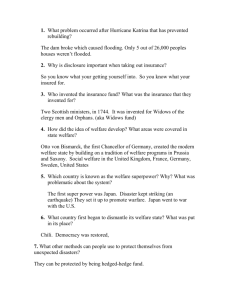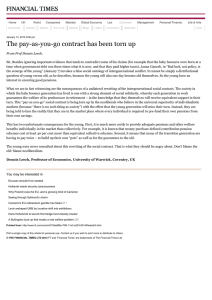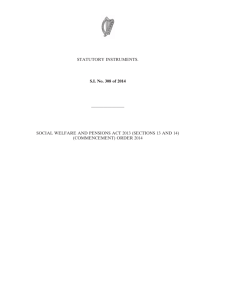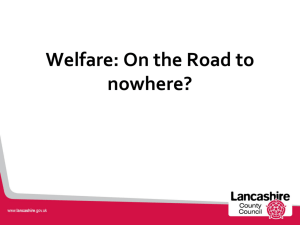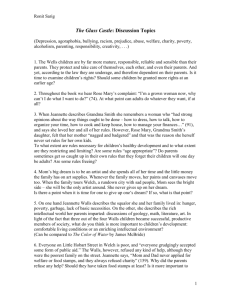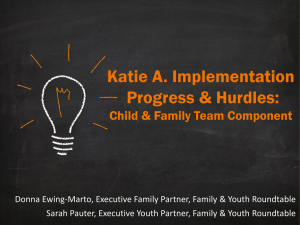14 Development of modern welfare Trattner 10
advertisement
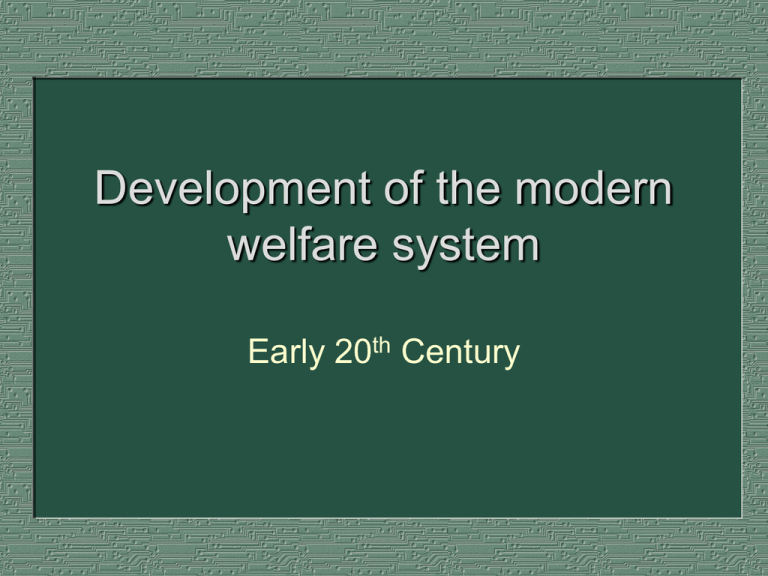
Development of the modern welfare system Early 20th Century Public v. Private Pendulum swayed back and forth throughout U.S. history By late 1800s welfare work mostly private – COS, Settlement Houses Could the two work in harmony? Origins of Current Public Welfare System 1909 White House Conference on Dependent Children Supported by social workers and sponsored by Theodore Roosevelt The beginning of social work’s domination of child welfare issues Purpose of Conference Bring together leaders and their experiences Develop a thorough plan for care of dependent children “Home life is the highest and finest product of civilization” and “children should not be deprived of it except for urgent and compelling reasons.” Importance of foster care and adoption Cottage type living if in institutions Establishment of U.S. Children’s Bureau Supported by social workers, especially those concerned with child labor Opposed by businesses, who feared it would end child labor Initially placed in U.S. Department of Commerce and Labor with a budget of about $25,000 Children’s Bureau was mainly charged with investigating and reporting conditions Headed by Julia Lathrop, social worker Politically savvy, she first tackled infant mortality as an issue Passage of Sheppard-Towner Act (1921) led to child and maternal health centers nationwide Sheppard-Towner Opposed as socialist (fear that government would come into home) Opposed because headed by women’s efforts Brought the federal government into child welfare through health through federal grants in aid to states Widows’ Pensions/Mothers’ Aid Another spin-off from 1909 conference Children should reside at home and not be put in institutions or for adoption when widowed moms could not support Anti-delinquency (mom should supervise) End the separation of mother and child for reasons of poverty alone Also thought to be less costly (mom and child in institutions) Opposed because it would transform charity into entitlement Beginning of gendered welfare state (OASDI benefits men and means tested benefits women) Widows’ Pensions Enacted 1911 Missouri enacted for “full time mothers with dependent children” In 1919, 39 states had such laws By 1935, all but SC and GA Return of public home relief Foundation for Title IV of SS Act (AFDC) – needy children cared for in own homes Part of a Broader Movement Progressives also sought end to child labor Also compulsory social insurance, workmen’s compensation, unemployment insurance, old age insurance (labor union support) Women’s suffrage (1920) Prohibition (1919)
